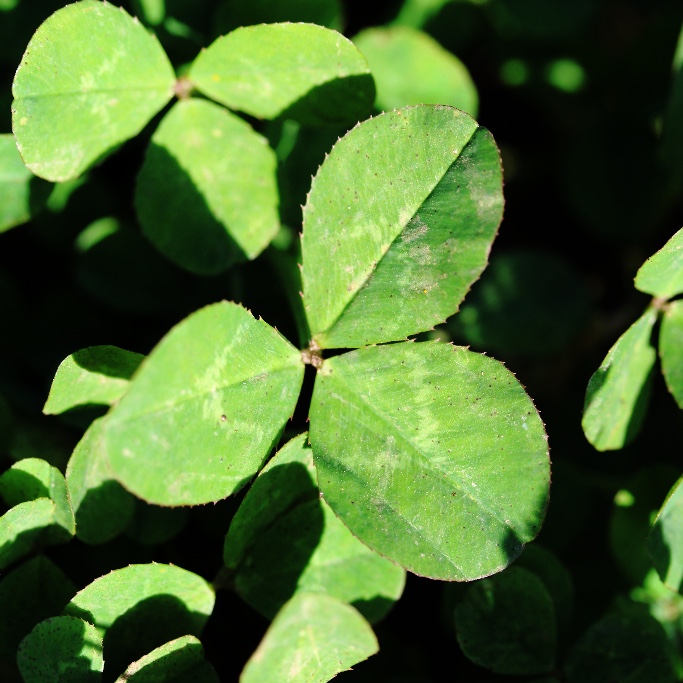2018 Week 7 Newsletter
Fibonacci Farm Math
I love the creative process of farming. I like to think of this farm as a blank canvas that we are lucky enough to have the opportunity to paint and make something both beautiful and useful. Math has those elements, too - it is both beautiful and functional. This week I have been looking for math elements in our plants. Do you remember learning that many plants contain numbers from the sequence called Fibonacci numbers? I find this fascinating and amazing. This sequence of numbers is formed by adding the preceding two numbers in the sequence to get the next number. Here is the sequence: 1, 1, 2, 3, 5, 8, 13, 21, 34, 55, 89, 144, 233, 377, etc. Not all plants or flowers contain this sequence but enough do to make you wonder - WHY? Here are some pictures of plants that contain spirals with this sequence. Take a look and see if any items in your CSA basket this week contain Fibonacci numbers.
The sunflower seeds form two Fibonacci sequences in their opposite spirals, the tomatillo husk has five sections, the cauliflower spirals in a Fibonacci sequence as well, and the lowly clover has three leaves. If you still want to explore more you can check out this fun math video.
“One
Small,
Precise,
Poetic,
Spiraling mixture:
Math plus poetry yields the Fib.
*Number of syllables per line follows the Fibonacci sequence”
— - Gregory K. Pincus
CSA Basket - Week 7
Here is what you can expect to find in a large share basket this week (asterisk for small share items):
Tomatoes* - First of the season! Enjoy!
Cucumber* - eat fresh on a salad or make some quick pickles for a snack
Basil* - stack the leaves, roll, and slice into thin ribbons for a garnish on anything
Ground Cherry* - perfect snack eaten raw (don't eat the husk!)
Head Lettuce* - enjoy a salad for dinner when it is too hot to cook!
Beets - try roasted and tossed with feta cheese
Shishito Peppers - try roasting with an herb infused olive oil and eat whole
Kale - try massaging with olive oil and tossing with balsamic vinegar
Kohlrabi - peel and julienne for a snack or add to a vegetable soup
Onions - slice raw onto salads to try a quick pickle which is delicious as a garnish on salads
Vegetable of the Week - Aunt Molly's Ground Cherries
Botanical Facts - Ground Cherries are another member of the nightshade (Solanaceae) family but are of the Physalis genus - which refers to the husk that forms around the berry. They are an herbaceous plant growing to 0.4 to 3 m tall, similar to the common tomato, but usually with a stiffer, more upright stem. They grow in temperate and tropical climates. The fruit is small and orange, similar in size, shape and structure to a small cherry tomato.
Historical Origins - Most of the species, of which there may be 75-90, are indigenous to the New World. Cultivated species and weedy annuals have been introduced worldwide. Reportedly, early colonial Americans used them in jams and pies. Other than that - I can't seem to find out much about their history! Here is an article with some ideas for using them:
http://www.smithsonianmag.com/arts-culture/five-ways-to-eat-ground-cherries-98470003/
Another Bite - From Chef Darlene:
Are you interested in learning more about cooking the vegetables in your basket? Here are a few vegetable-focused cookbooks that I like:
Eating from the Ground Up, Alana Chernila
Six Seasons, Joshua McFadden
The Vegetable Butcher, Cara Mangini
Vegetable Literacy, Deborah Madison
Plenty, Yotam Ottolenghi
Tender, Nigel Slater
Vegetable Love, Barbara Kafka
Vegetarian India, Madhur Jaffrey
CSA Tip of the Week: Pasta
Pasta sauce does not have to be red; pretty much any vegetable or green can be chopped, sautéed with a little garlic and sliced onion and tossed with pasta and cheese. Add leftover shredded chicken or cooked beans for added protein.
We are working to remove the Tansy Ragwort from our hay fields. Tansy Ragwort can cause fatal liver failure in livestock. It is in bloom right now so it is easy to find and pull. We have help from the Cinnabar Moths that were released in the 70s as biological control agents. A Savannah Sparrow is resting on the tansy ragwort in the picture above.
We would love to hear from you! What have you been preparing with your vegetables? Have you tried something new? Let us know! Send us an email or post on Facebook and we can share your ideas with others in the next newsletter.
We will continue to be at the Harstine Island Farmers Market and Shelton Farmers Market on Saturdays throughout the summer. You can also find us online at Fresh Food Revolution for deliveries to Gig Harbor, Key Peninsula, and Allyn. Come see us at the market!
Your SVF Farm Team








